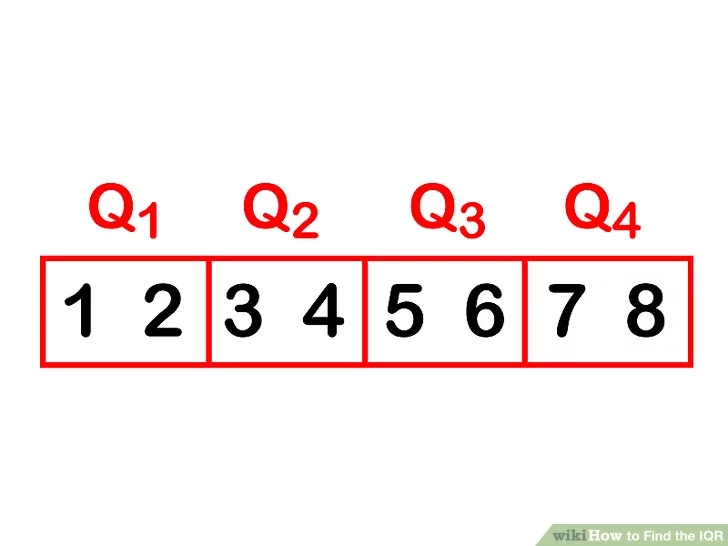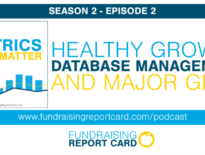Is there a quantitative approach to determine what a major gift is? Sure, a major gift is one that makes a major impact on your organization, but is there a data driven way we can determine what the threshold is for a major gift? You know what I mean, the actual dollar amount that justifies major attention.
I recently found myself contemplating this question after I got off of a phone call with a consultant who picked up a new contract with a performing arts center.
“There’s a divide between the annual fund and the major gifts department…” she began telling me over the phone. “They have some annual fund donors that give $25,000 each year, but because they’re in the annual fund, the major gifts team isn’t allowed to engage with the donors.”
My mind was spinning a million miles an hour. Ah, the silos of bureaucracy, how pleased I am not to deal with them on a daily basis!
“Don’t they have giving thresholds? Wouldn’t a $25,000 donor be in the ‘major donor’ segment?” I asked.
“Of course they do, it’s simply that not everyone is on the same page and independent teams are territorial.”
This conversation got me thinking…
First, there is a functional breakdown in regards to how this organization is structured. When teams look out only for their independent interests and not for the organization’s, that’s a bad sign.
Secondly, I couldn’t help but fixate on the phrase, “of course they do, it’s simply that not everyone is on the same page…” The organization has giving levels and those giving levels should take on certain meaning internally, but for this particular team the levels were meaningless (partly because not everyone was aware they existed or knew what they were). No wonder individual teams became territorial, without a clear understanding of what their giving levels were or why they existed it would be easy to not “follow the rules.”
How then do growing and effective nonprofits segment their donor giving levels? What techniques or tactics do other organizations use to determine who is a major donor versus a large annual giver? There are myriad articles online that try and answer this question and most suggest the same thing, “think about what is major to you” they’ll say, “that’s a major gift!” This is good and well, but there must be a more scientific and quantitative way to approach this answer.
Let’s find out how big a major gift really is.
What is a Major Gift?
Before we propose how to calculate your organization’s major gift threshold we must agree qualitatively on what defines a major gift . The term “major gift” is used by most all nonprofits and from a quantitative standpoint takes on drastically different meaning ($1,000 at a small shop, $100,000+ at a humongous institution), but qualitatively at both organization’s “major gift” means the same exact thing.
One way to frame the significance of a major gift is to compare it to dating. Think back to your first date with your significant other. When you went out were you thinking about marriage? Odds are you weren’t. Two years, hundreds of dates, and thousands of hours later you might be having conversations about marriage. Major gifts are like those conversations — they don’t generally happen on the first, second or even third date — they can (and will) take years to cultivate and realize. You know when you’ve received a major gift because it most likely went through this long-term process.
From a qualitative standpoint major gifts are universally understood to be donations that are so large they make a major impact on an organization’s reach. The timeless advice of “think about what is major to you — that’s a major gift!” applies in this context.
However, having only a qualitative definition of what a major gift is isn’t enough. Think back to my brief anecdote from the consultant working with the performing arts center above. Their team has become territorial simply because there are unclear guidelines for what a major donor threshold is (or should be).
Goal setting, reporting, and myriad other data-intensive tasks require an organization to construct a threshold for “major giving.” How then can we take something so loosely defined and determine what it truly is?
Is a major gift an outlier?
In statistics there is a simple concept called the outlier. An outlier is defined as a value that “lies outside” (is much smaller or larger than) most of the other values in a set of data.

When it comes to major gifts can we use the concept of the outlier to determine our major giving threshold? Since we qualitatively and psychologically agree that a major gift is one that has a major impact on your organization, would it also be fair to then suggest that an outlier gift is the same thing?
The benefit of drawing this connection is that there is a simple formula we can apply to determine what an outlier is. Centuries of statistics have yielded us with proven concepts we can apply to any data-set to determine it’s outliers.
In descriptive statistics we have the concept of the interquartile range (IQR). The IQR (or middle 50%) is the difference between the 75th and 25th percentiles. The IQR is equal to Q3 – Q1 — the third quartile minus the first quartile in a set of data.
How do you come up with your quartiles? Don’t overthink it. Quartiles are exactly what they sound like, they’re 25% distributions of your data-set.
It helps to visualize a quartile. To do that, simply chop a list of numbers into four equal parts. Each of these parts is a “quartile.” Consider the data-set: 1, 2, 3, 4, 5, 6, 7, 8.

- 1 and 2 are the first quartile, or Q1.
- 3 and 4 are the second quartile, or Q2.
- 5 and 6 are the third quartile, or Q3.
- 7 and 8 are the fourth quartile, or Q4.
Simple, right?
With your donor database you’ll most likely have more than 8 numbers in your data-set, but the concept stays the same. Instead of the numbers one through eight, we’ll want to analyze all of the donations in your database.
Once we have our quartiles and our IQR (again, IQR is simply Q3 – Q1) we can begin to calculate if an outlier exists. The formula to calculate an outlier is straightforward, it is simply:
1.5 * IQR.
The value this produces is your upper-bound (the threshold for a major gift). If a number lies beyond this value it is considered an outlier.
Let’s use a more practical example to describe how this might look within your own donor database. Let’s say your organization has 8 donations:
- $20
- $40
- $100
- $150
- $200
- $400
- $500
- $1000
Would any of these donations be considered a major gift with our quantitative outlier approach?
Let’s see.
First, we’ll calculate our IQR.
- Q1 would be ($20 + $40) ÷ 2 = $30
- Q3 would be ($200 + $400) ÷ 2 = $300
- IQR would be Q3-Q1, $300 – $30 = $270
To calculate our upper bound we’d multiply our IQR, in this case $270 times 1.5. Anything greater than this value is considered an outlier. $270 * 1.5 yields $405. It appears in our data-set we have two major gifts, the $500 donation and the $1,000 donation.
With our example data-set this may seem a bit far-fetched — is a $500 really a major gift? That’s for you to decide, but it sure is an outlier.
Applying this at your shop
Using statistics to inform your giving level segments makes sense. There’s good reason why it is frequently overlooked though…it takes some knowledge and expertise to implement properly. For example, even our discussion today of using the outlier method to determine what your major gift threshold should be takes a bit of expertise to feel comfortable leveraging it.
With that in mind, this article should provide the foundation for you to try and calculate your major gift threshold. If you still don’t feel comfortable doing this on your own, don’t fret. Leave a comment below, or send me an email (zshefska @ fundraisingreportcard.com). I’d be more than happy to help you calculate what your quantitative major gift threshold really is.




